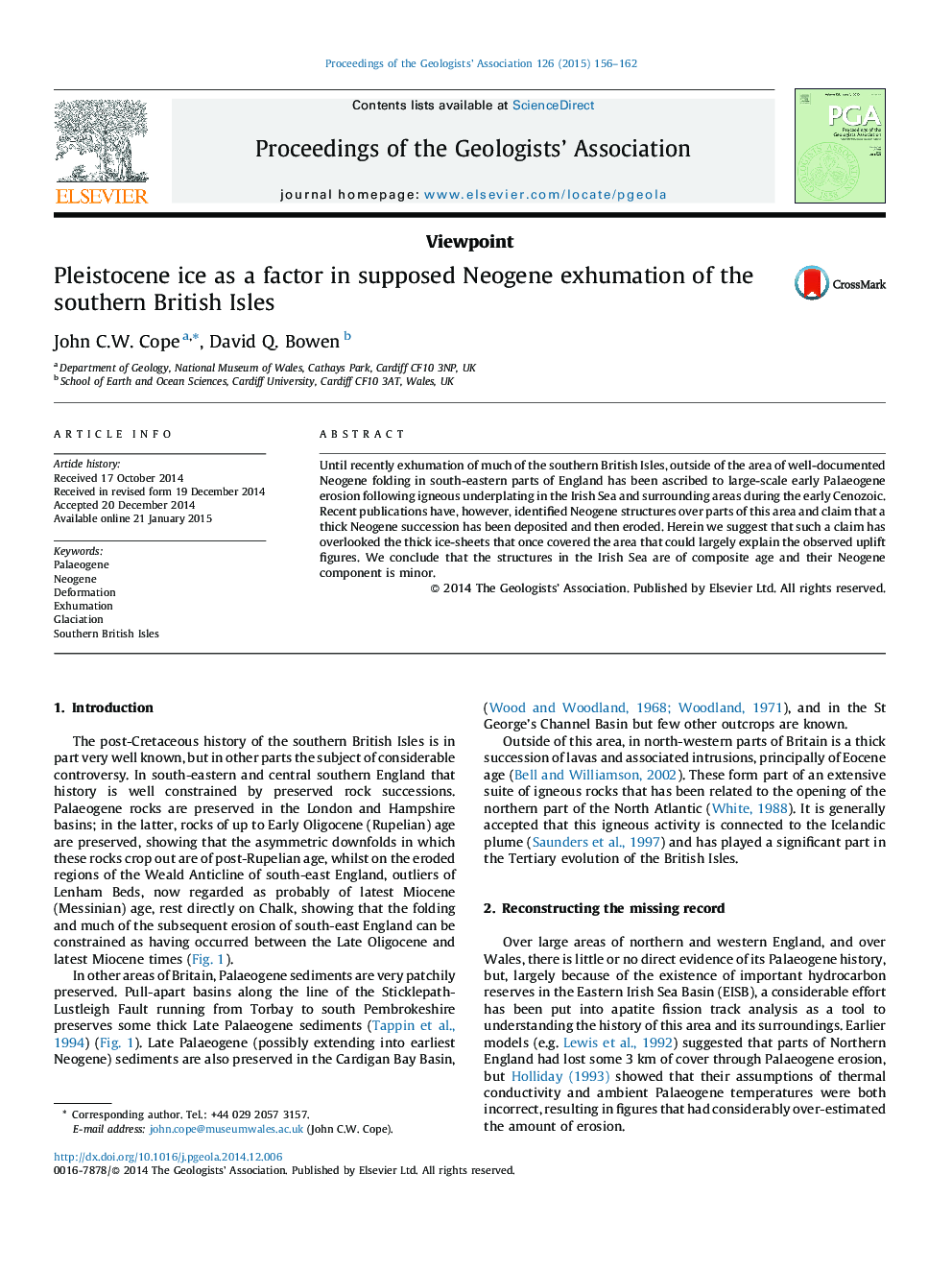| Article ID | Journal | Published Year | Pages | File Type |
|---|---|---|---|---|
| 4735048 | Proceedings of the Geologists' Association | 2015 | 7 Pages |
Abstract
Until recently exhumation of much of the southern British Isles, outside of the area of well-documented Neogene folding in south-eastern parts of England has been ascribed to large-scale early Palaeogene erosion following igneous underplating in the Irish Sea and surrounding areas during the early Cenozoic. Recent publications have, however, identified Neogene structures over parts of this area and claim that a thick Neogene succession has been deposited and then eroded. Herein we suggest that such a claim has overlooked the thick ice-sheets that once covered the area that could largely explain the observed uplift figures. We conclude that the structures in the Irish Sea are of composite age and their Neogene component is minor.
Related Topics
Physical Sciences and Engineering
Earth and Planetary Sciences
Geology
Authors
John C.W. Cope, David Q. Bowen,
